Visit to the Wieliczka Salt Mines in Kraków
Krakow, August 12, 2018
One of the places I had been meaning to visit since I arrived in Krakow was the Wieliczka salt mines. When I first arrived in the city, I took the opportunity to see the Old Town and the Jewish Quarter, postponing my visit to Auschwitz and the Wieliczka salt mines for a full-day trip after I finished working in Zakopane. I knew both places deserved a proper, unhurried visit.
Last night, I looked at options for getting to Wieliczka and saw that there were quite a few possibilities. On the one hand, I could book an organized tour that included transportation and entrance. Otherwise, I could go on my own and buy the ticket at the box office. The price difference between the two was quite significant. My main concern was that many websites indicated tickets were sold out, but I read that they always leave a margin for last-minute travelers. So, staying true to my low-cost travel style, I decided to take a chance, head to the salt mines, and see what happened.
A bit of history about Wieliczka
To give you some context, the Wieliczka salt mines are among the oldest in the world. They were discovered in the 15th century and were continuously exploited to produce table salt until recently.
During World War II, the Germans used the mines as a war warehouse. In 1978, they were declared a UNESCO World Heritage Site, and today they are one of Poland’s most popular attractions, drawing over a million visitors each year.
The mines are over 327 meters deep and more than 300 kilometers long, often referred to as the “underground cathedral of salt in Poland.”
How to get to Wieliczka
Wieliczka is not in central Krakow but about 15 kilometers outside the city. Walking was out of the question. During my research, I found three ways to get there:
- Organized tour: This is the most convenient and safest way, as you don’t have to worry about transportation or entrance. Tours range from €30 to €40.
- By train: Trains leave every half hour from Krakow’s main station, Dworzec Główny, and the trip takes about 20 minutes. If you choose this option, get off at Wieliczka Rynek Kopalnia. The one-way ticket costs 3.50 PLN, and you can buy it online or at the station.
- By bus: Take line 304. The stop is on Ogrodowa Street, near Galeria Krakowska, and you should get off at Wieliczka Kopalnia. Tickets can be purchased from a machine on the bus, but be careful! The regular ticket won’t work for the salt mines. You need to select a special ticket (about 20 cents more). I didn’t know this and bought the regular one. Luckily, the bus inspector was forgiving when he noticed I didn’t have the right ticket. The bus and train prices are nearly the same.
The Wieliczka salt mines website explains all the transportation options.
Tour schedule and logistics
The salt mine’s schedule varies depending on when you go, and entry is divided into time slots according to language. Keep in mind that the tour lasts about three hours. If you’re short on time, you won’t be able to take it all in or risk missing out. I went around 10:00 AM to make the most of the day, prepared to wait a few turns if necessary.
To buy my ticket, I simply got in line and waited my turn. There were quite a few people, but the line moved quickly. At the ticket booth, the attendant asked if I wanted to join the English or Spanish tour. The Spanish one was starting in less than five minutes, but the lady assured me I had enough time, so off I went. For each language, the tours have different start times. For Spanish, there was one at 11:30 AM (the one I took) and another at 3:30 PM. Naturally, the English tours were more frequent (but also sold out faster), with groups starting every hour.
Ticket in hand, I joined the queue marked with the Spanish flag and a few minutes later began the tour with other Spanish speakers. The groups entered in turns to avoid overcrowding inside the mines.
Note: You can’t enter the salt mines on your own; you must go on a guided tour.
Prices and itineraries
The prices vary depending on the tour you choose:
- Tourist Route: As the name suggests, this is the most popular and comprehensive tour, covering the key sights of the mines. It includes chambers, underground lakes, wooden structures, salt sculptures, etc. In peak season, with a foreign-language guide (non-Polish), a standard ticket costs 94 PLN (€22).
- Miners’ Route: More of an expedition than a tour, you’ll be equipped with work clothes, a helmet, and a lamp, just like a real miner. It’s more of an “adventurer” experience, though the price is the same.
- Graduation Tower and Pilgrims’ Route: The first is a therapeutic walk intended to treat respiratory conditions, as the air is rich in healing salt aerosols. The pilgrimage route is a religious underground tour through Wieliczka’s chapels, sacred sculptures, and a stop at St. John’s Chapel for prayer.
One curious thing was that if you wanted to take photos or videos inside the mines, you had to pay an additional 10 PLN (€2.30). You could even pay this fee inside the mine to a man at a counter right before reaching the main chapel. Once paid, you get a sticker indicating you were “authorized” to take pictures. You could pay with a credit card too.
The Route
The Tourist Itinerary
To start the tour, we descended no less than 378 steps to reach the first level. From there, we continued down more stairs (800 in total) to see all the galleries. The stairs were spiral-shaped, and after a while, you started to lose track of how far you’d descended. At some point, a few fellow Spanish tourists in my group became impatient.
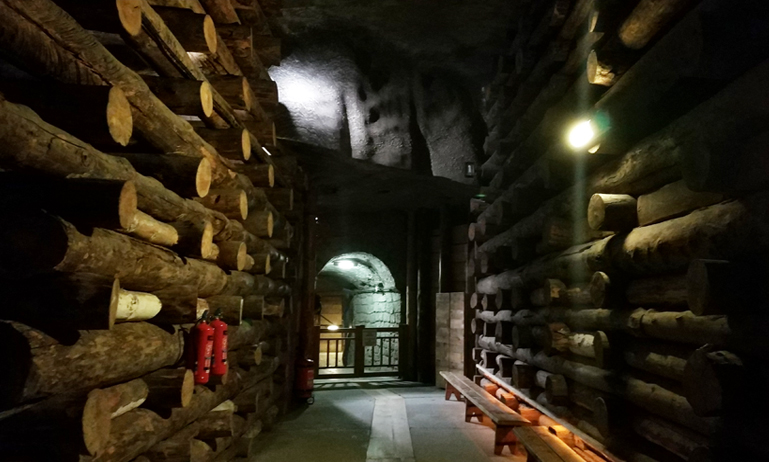
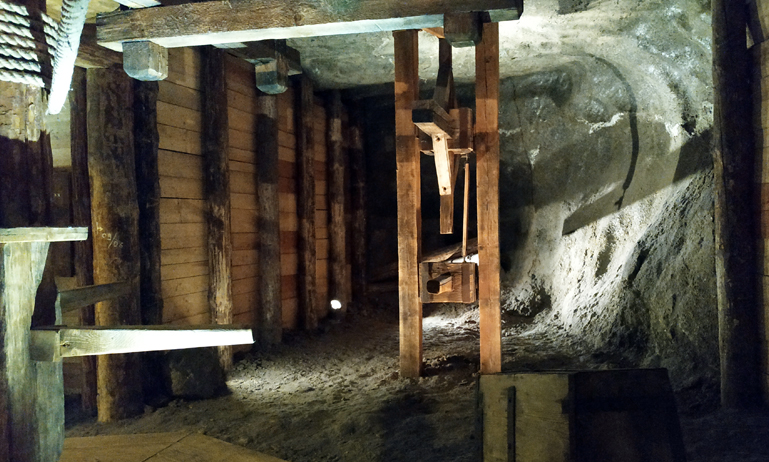
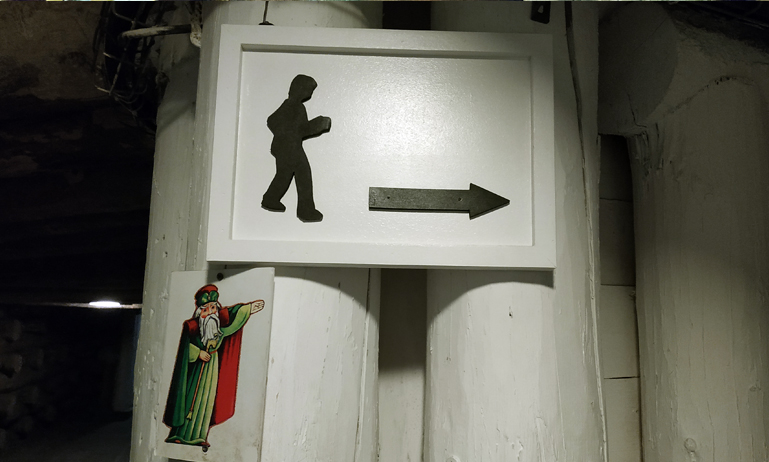
The tourist route spans 3.5 kilometers of galleries where you can see 22 unique chambers. These include underground lakes, old mining tools and machinery, sculptures, and even religious chapels carved out of salt. I was amazed that practically everything was made of salt, even the chandelier crystals. The tour also featured exhibitions illustrating Wieliczka’s history.

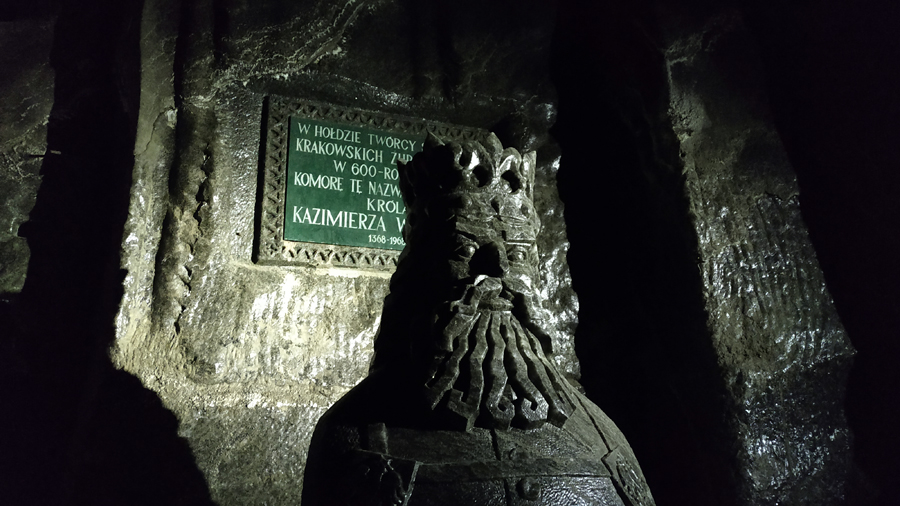
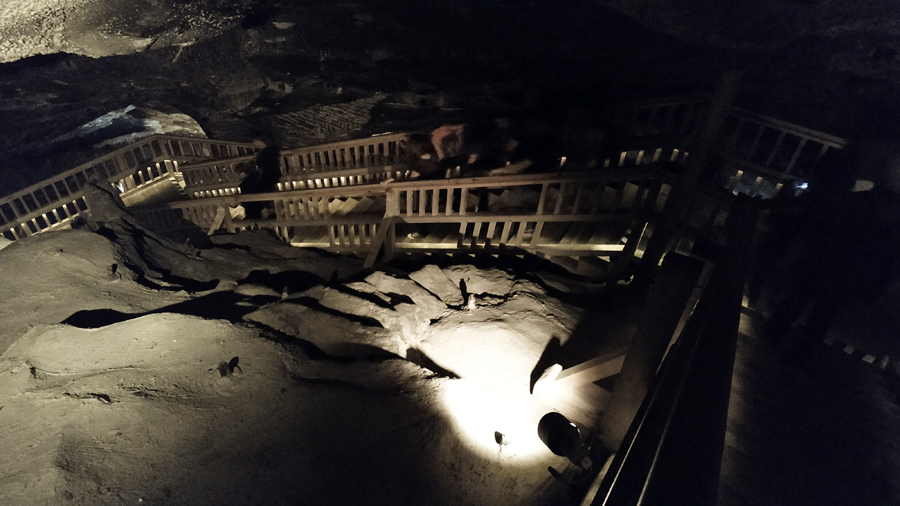
St. Kinga’s Chapel
The most beautiful spot in the salt mines was St. Kinga’s Chapel, an enormous hall 54 meters long, decorated entirely with salt, of course. Before entering, the man who charged for taking photos was stationed at his post. I opted to continue and admire the chapel on my own.
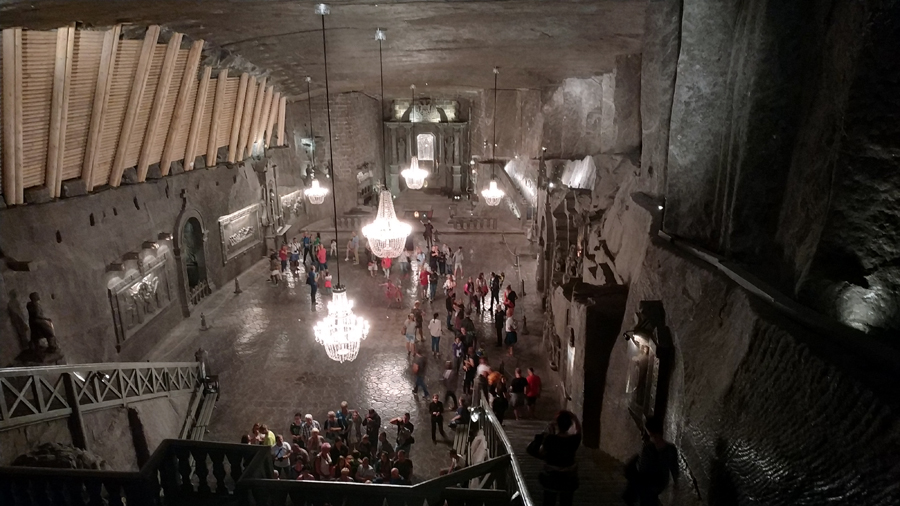
The room was filled with sculptures of famous figures like Copernicus, the Polish king Casimir the Great, and a replica of Leonardo Da Vinci’s “The Last Supper.” Interestingly, the sculptures were carved by three workers who labored there, purely for the love of art. Their attention to detail was truly impressive. These men were buried in this very chapel.
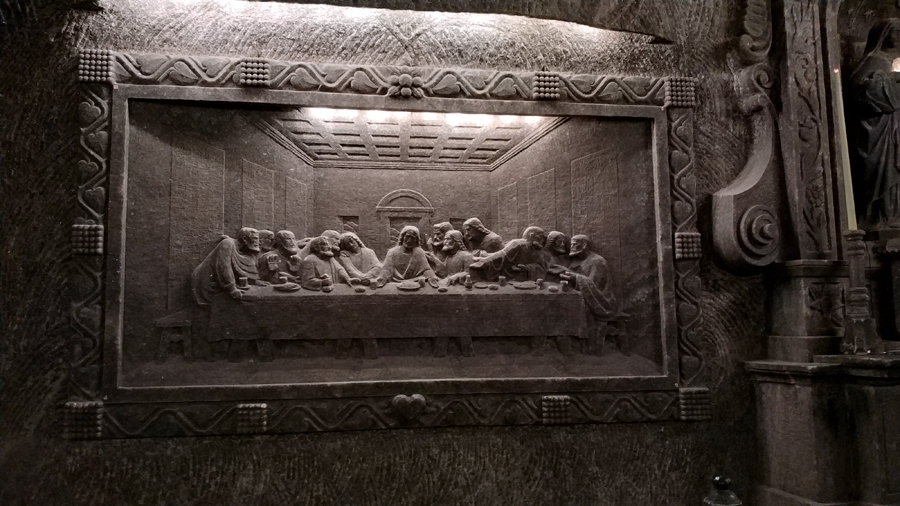
Another thing that stood out about St. Kinga’s Chapel is that it’s still active today. Weddings and all sorts of events are still held there thanks to its large size.
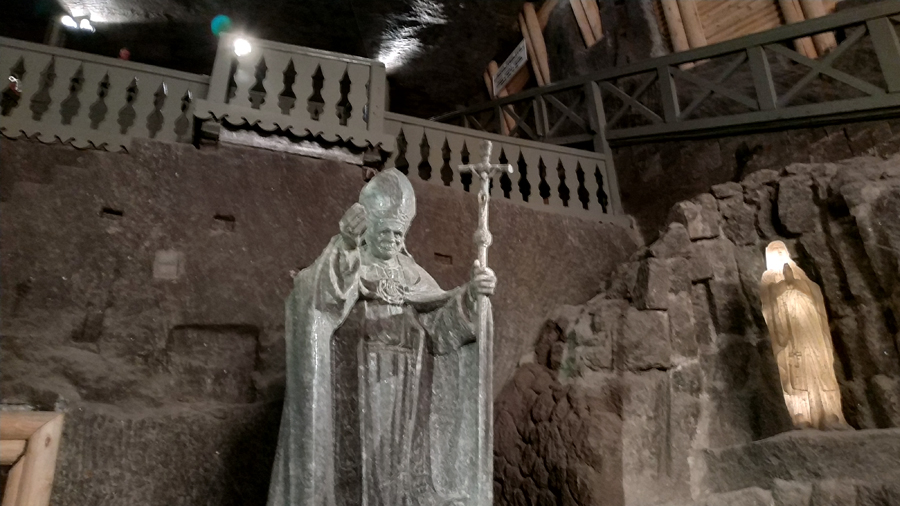
Józef Piłsudski Grotto
Another significant chamber was the one dedicated to Józef Piłsudski, the first head of state of the Second Polish Republic. At the center was a large pool of water, and a tunnel connected it to another chamber.
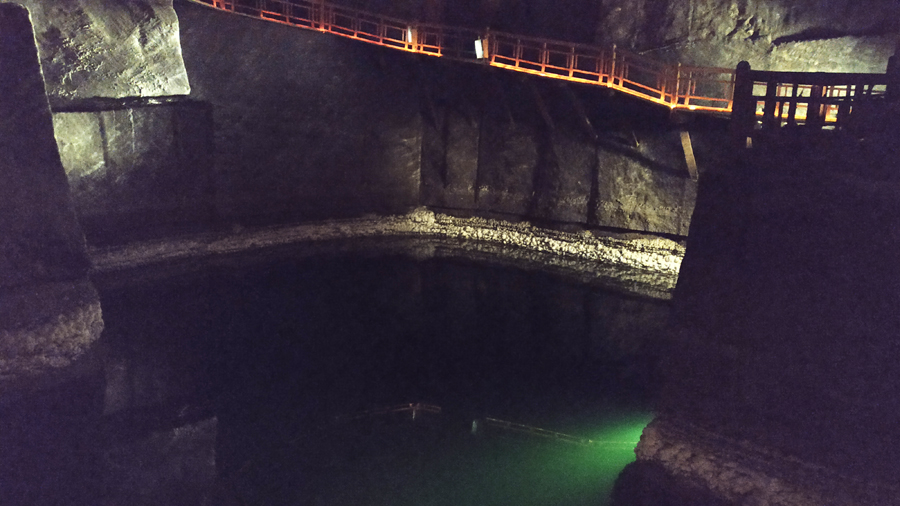
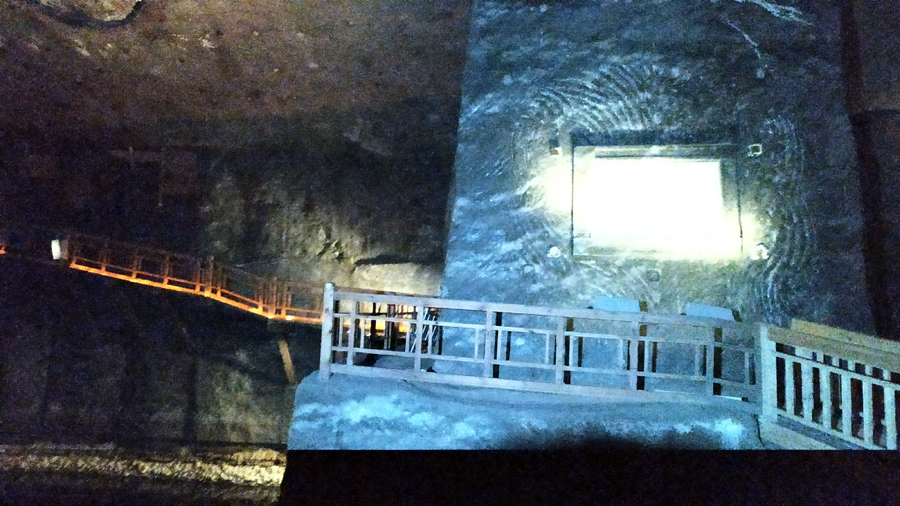
The grotto’s walls were made of wood and salt, and it featured a 19th-century figure of St. John of Nepomuk, a martyr who preferred death to reveal a secret and drowned in the Vltava River. As a result, he is considered a protector against slander and floods.
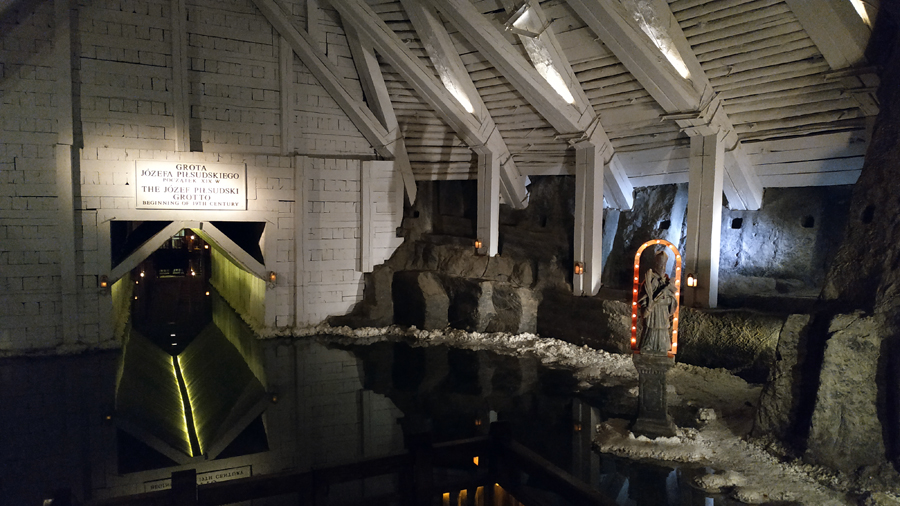
The touristy moment
At the end of the tour, we arrived at a hall that somewhat broke the magic of the salt mines (or at least its exotic feel). This space housed a large souvenir shop, a bar selling food and drink, restrooms, etc. Yes, all inside the mine. While I understand the desire to capitalize on the location, it felt a bit artificial.
Heading back to the center
To return to the center, I decided to try something different and took the train instead of the bus. The station is just a few meters from the mines, and tickets can be purchased from a machine on the platform. On the way back, I met a lovely Spanish couple traveling through Poland on vacation. It’s always nice to meet new people. 🙂
I found visiting the salt mines fascinating since it’s not something you see every day. Although at first, I was puzzled by not being able to explore them on my own, once inside, I understood. There are many paths, and if you get lost, it could be a real mess, as you’re underground with no cell reception. While it seemed a bit expensive compared to other activities in Poland, the level of care and conservation required for the mines must be quite high.